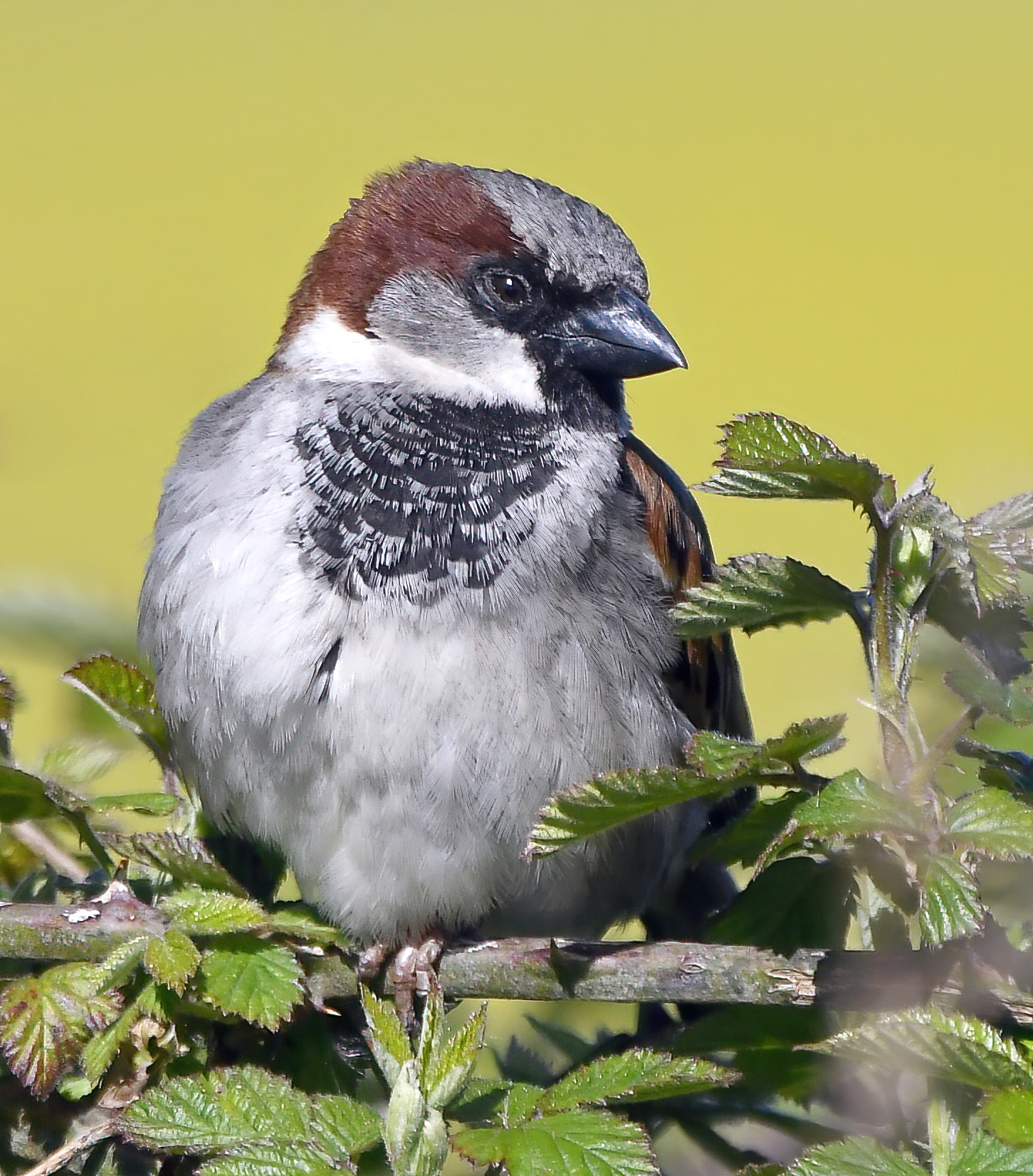House Sparrow again tops UK garden bird charts
House Sparrow topped the Big Garden Birdwatch charts for the 20th year running in 2023, the RSPB has revealed.
However, the nature charity has described the widespread decline of House Sparrow in the UK countryside as "startling", with an estimated 22 million sparrows lost since the mid-1960s. Although some 1.5 million individuals were counted during 2023's Big Garden Birdwatch, this figure is 60% down on the first survey 44 years ago.
This year's results have also highlighted the vulnerabilities of garden birds, from weather changes to disease. Greenfinch and Chaffinch have been badly affected by Trichomonosis in recent years. The UK Chaffinch population has declined by 34% over the last decade, while Greenfinches have declined by 65% over the same timeframe. Trichomonosis can be spread by contaminated food and drinking water, and garden owners can help by ensuring that feeders, bird tables and bird baths are moved around to stop food waste building up, regularly cleaning with a mild disinfectant and only filling up feeders with enough food to last up to two days. If you see sick birds where you are feeding, temporarily stop feeding for at least two weeks and leave bird baths dry.
Long-tailed Tit, a much-loved species, rose five positions in the rankings this year, with numbers 39% higher than in 2022. However, this species is susceptible to harsh weather conditions, with the numbers fluctuating greatly since the Big Garden Birdwatch began, highlighting the fragility of some of our smaller garden birds.
Big Garden Birdwatch is the world's largest garden wildlife survey and gives the RSPB insight into how some of our most common garden birds are faring. Now in its 44th year, Big Garden Birdwatch is a chance for people of all ages to count the number of birds that visit their garden, balcony or local park, helping the RSPB to get a snapshot of how they are faring. This year more than half a million people across the UK took part, counting more than 9 million birds.

House Sparrow was the most-seen species in the Big Garden Birdwatch again this year (Carl Bovis).
The RSPB's Chief Executive, Beccy Speight, said: "With so many people sending in their sightings over the weekend from across the UK, Big Garden Birdwatch really helps paint a picture of how our garden birds are faring.
"While we celebrate the 20-year stint of House Sparrow at number one, the numbers speak for themselves when it comes to the startling declines of some of our once-common birds. They no longer have the abundance across the UK that they used to have. We are in a nature and climate emergency and we've lost 38 million birds from our skies in the last 50 years."
Over its four decades, Big Garden Birdwatch has highlighted the winners and losers in the garden bird world. It was first to alert the RSPB to the decline in Song Thrush numbers, which are down 80% compared to the first Big Garden Birdwatch in 1979. This species was a firm fixture in the top 10 in 1979 but by 2009, its numbers were less than half those recorded 44 years ago. Song Thrush scraped in at number 20 in the rankings this year, seen in only 9% of gardens.
Additionally, more than 66,000 children and their teachers took part in the sister event – the Big Schools Birdwatch – this year. The results revealed that Blackbird, Woodpigeon and House Sparrows were the top three birds observed in school grounds.
Beccy Speight added: "With spring seeing the nature on our doorsteps burst info life, we're hopeful that more and more people will feel empowered to help save our wild isles. Connecting with nature doesn't have to stop with the Big Garden Birdwatch; everyone can experience the joy of giving nature a helping hand by going wild once a week."

